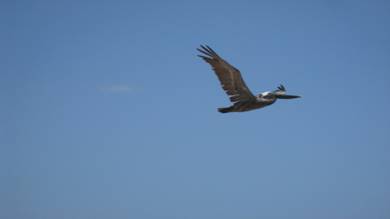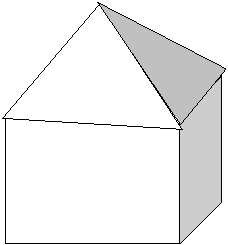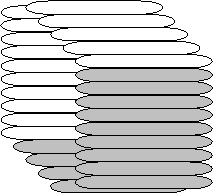Edible Birdhouse Bonanza
Natasha Cooke-Nieves

[Picture taken in Puerto Rico, 8.08]
Wondering what to do in the springtime for a good ol’ messy fun science activity? Well, take this open inquiry inspired architectural activity. Bringing in the next era of integrated disciplines, STEM (Science, Technology, Engineering, and Mathematics) offers your class a satisfying multiple content area lesson. This lesson which takes three periods will illustrate a homemade habitat for local bird species. It exemplifies how humans can make a home for an organism and is also a great way to observe bird behavior, bird eating habits, bird eating preferences, the area of a birdhouse, and bird to bird communication.
Materials:
- newspaper (to cover the table and to ensure easy cleanup!)
- popsicle sticks
- Elmer’s or wood glue
- peanut butter (substitute soy or apple butter for those students/adults who are allergic)
- plastic knives or spreaders
- metric ruler
- pencil
- bird seed (found in a local pet store or even your local large drug store in the pet food aisle, small bowls to hold bird seed,) or sunflower seeds
- paper towels
- soap & water (for hand clean up)
Procedure: The great thing about open-ended inquiry is the procedure part needs little direction. You could make a model to show the class a visual representation of a birdhouse. But you can also show examples of birdhouses sold in stores. Students can work individually or in pairs for this project. The students can do some 3-D technical drawing first by designing a birdhouse plan using a metric ruler (cm) and a pencil with an eraser.

A mini-lesson can be done explaining the structure of a house: foundation, walls, and roof. Place the materials (newspapers, glue, 50 popsicle sticks per student/group) on the desks and give the students free-design time – where they design and create at the same time without a pre-plan.

2. Allow glue on birdhouse to dry for a day
3. Cover tables with newspaper. Take out peanut/soy/apple butter, plastic knives or spreaders, and bird seed. Use knife to spread peanut butter – a tablespoon at a time – over the walls of your birdhouse and use the same knife (which probably still has peanut butter) to dip into birdseed and spread over the walls of your birdhouse. Repeat until entire birdhouse is covered- walls and roof.
Questions or comments? E-mail me.
|